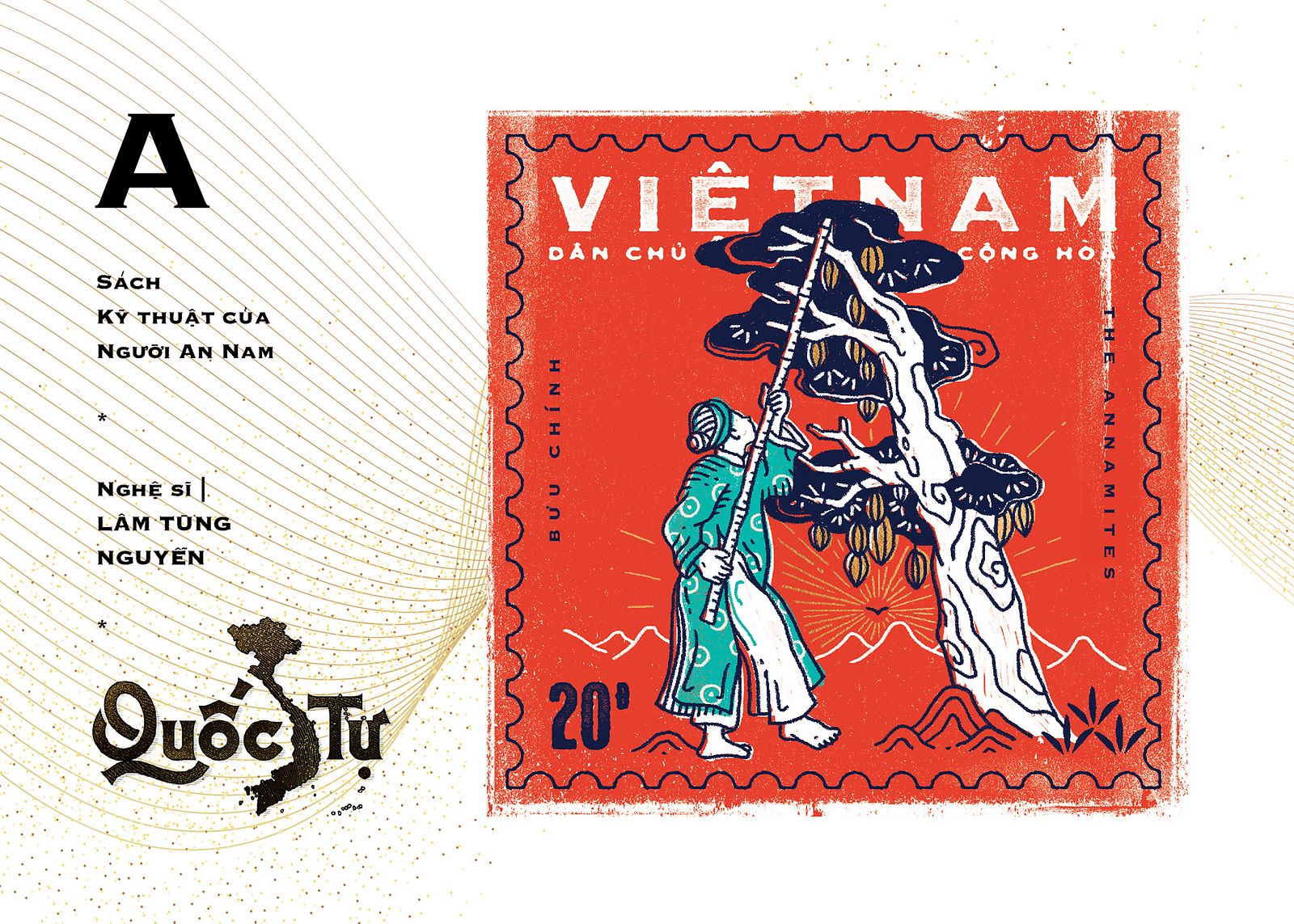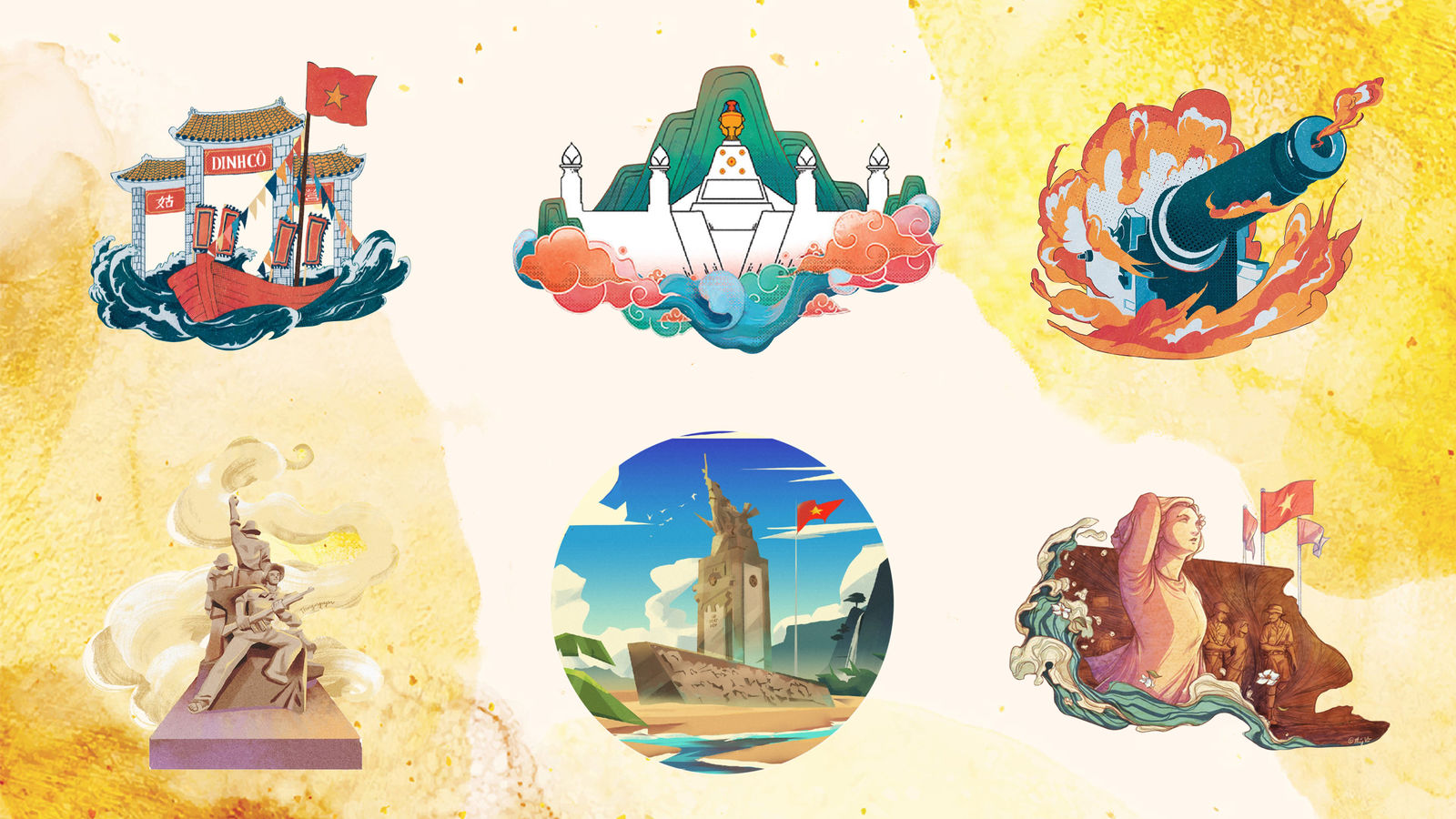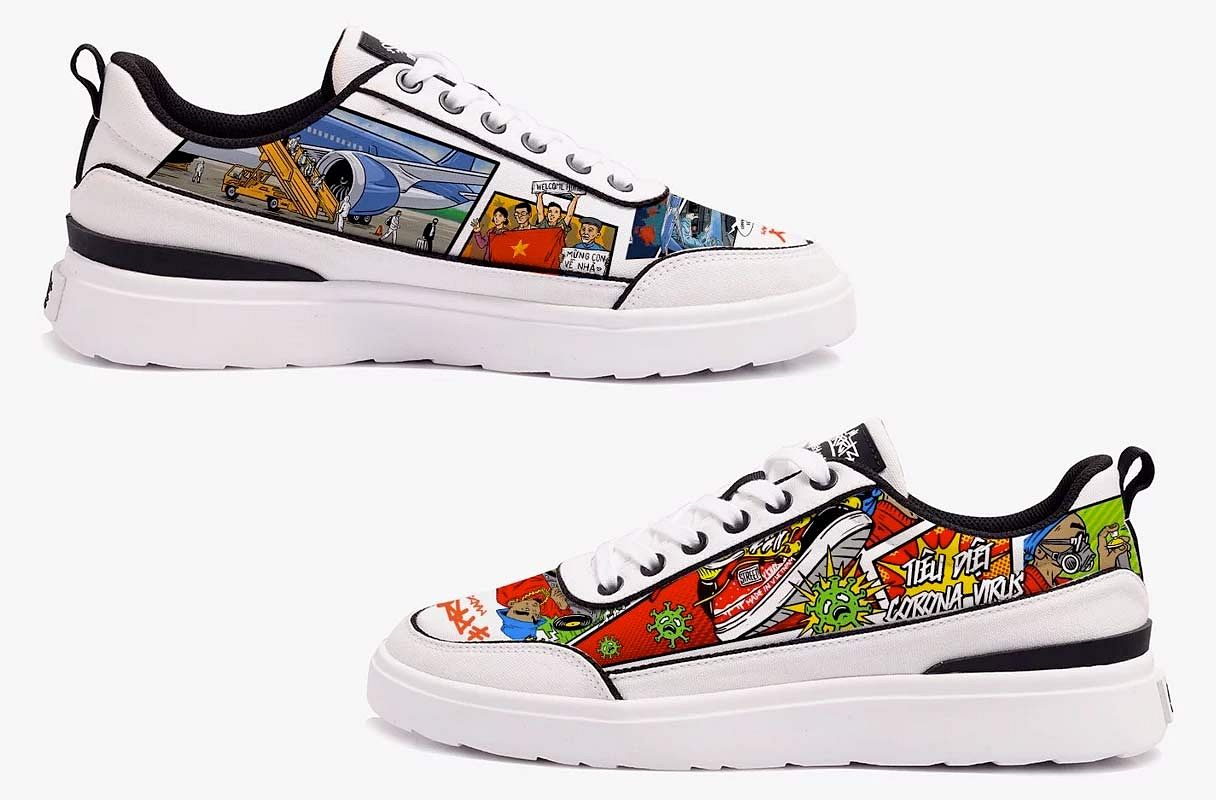“Quoc Tu” features a plethora of images familiar to Vietnamese, from folk games and legends to more recent cultural artifacts such as the Flappy Bird game or Da Nang’s famous golden bridge.
The project was created by Nguyen The Manh and Vinh Vuong and features 29 artists from all three major regions of Vietnam. Each artist illustrates an alphabet letter in Vietnamese according to a theme or a cultural artifact whose name contains it as the initial letter.
According to Nguyen The Manh, “Quoc Tu” is inspired by another illustrative typeface project, “Unlimited Letters,” started by Doan Phu Trong back in 2013. Trong is also a guest artist in “Quoc Tu.”

Manh is no stranger to Vietnam's graphic design scene, having created many successful typeface projects previously such as Cotdien, L'Hanoienne and Classique Saigon. Vinh Vuong, on the other hand, is the mind behind long-term project Mien Trung, a cultural celebration of the cuisine, architecture and folk culture of central Vietnam.
Take a look at the beautiful typeface below:

The artwork is a reference to Technique du peuple Annamite, a woodcut printed book that includes sketches depicting the daily activities of people in Hanoi published around 1908–1910. Illustration by Lam Tung Nguyen.

Illustration by Hoang Sym.

The letter â above is illustrated with a reference to the mother of the Vietnamese people, Âu Cơ, in the country's creation myth. Illustration by Lan Anh Ng.

Vietnamese and foreigners perhaps are no stranger to Flappy Bird, the addictive mobile game developed by Vietnamese video game artist and programmer Dong Nguyen. Illustration by Tan Nguyen.

Representing the letter C, cờ người is a popular human chess game in northern Vietnam. Illustration by Ho Phu Vinh.

The letter D in the above artwork is the first letter of De Men Phieu Luu Ky (Adventures of a Cricket), Vietnam's most famous children's book, written by To Hoai. Illustration by Bui Duy Khac.

The thematic concept for the illustration of the letter đ comes from Dong Ho folk paintings. Illustration by Manh Hung.

For the letter E, the artist gives a shout-out to 'Em Thuy,' an oil painting by Tran Van Can, which depicts his eight-year-old niece. 'Em Thuy' is one of the most famous portrait paintings in the history of Vietnam's fine arts. Illustration by Hoang Tam.

The portrayal of the letter E references a popular Vietnamese folk tale and saying, ếch ngồi đáy giếng (frog in the well). It tells the tale of a frog who lives in the bottom of a well and believes the universe is only as big as the well it's living in. The saying is often used to describe people who are closed-minded and ignorant. The artist mentions that he feels like living in Saigon is similar to being the frog in the story, being stuck in a chaotic city. Illustration by Nguyen Tat Sy.

Rather than taking a cultural artifact like other artworks, in their take on the letter G, the artist travels to 2021 when Vietnam hosts the SEA Games 31 and the Para Games 11. Illustration by Phan Phan.

In the illustration for the letter H, the artist make uses of song long hí châu, the image of two dragons with a pearl, a common visual archetype in Vietnam's ancient architecture. Illustration by Do The Thanh.

The artwork takes inspiration from Vietnam's abundance of electrical poles. Illustration by Nguyen The Manh.

In a similar fashion to Manh's electric poles, the above artwork is a whimsical tribute to the prevalence of amateur advertisements for concrete drilling and sawing services around the city. Illustration by Nhat Anh Nguyen.

Reconstructing the image of the mythological creature lân. Illustration by Do Giap Nhat.

For the letter M, the artist takes inspiration from Vietnam's popular water puppet shows. Illustration by Trinh Hoang Kha Ly.

Collective apartment buildings in Hanoi become the centerpiece for the above design of the letter N. According to the artist, these buildings hold a special appeal to them. Illustration by Nguyen Minh Ngoc.

Ok Om Bok is an annual moon worship festival practiced by the Khmer populations in the Mekong Delta. Illustration by Nhi Hee.

A work inspired by whale worship and tranh làng Sình, a genre of folk paintings in Hue. Illustration by Trinh Lam Bao Thang.

The letter ơ in this artwork takes us to the wealth of Vietnamese lullabies and folk poems. One of them is 'Con Co' (The Stork). Illustration by Le Duc Hung.

A cheeky shout-out to Park Hang-seo, the South Korean coach of the country's male national football team. Illustration by Tran Kien.

The artwork takes two images of the turtle: one is the turtle carrying a stork, often seen in temples, and another is the turtle on top of which the stele of doctors sits at the Temple of Literature in Hanoi. Illustration by Birik and Ideas.

The shape of the letter R in the above design was illustrated with the image of a typical Sapa rice terrace. Illustration By Yen Nguyen.

According to the artist, the work is a response to the decreasing number of mysterious saola, an endangered forest-dwelling bovine in Vietnam. Illustration by Nhien Nguyen.

Chú Tễu is the jokester, a character commonly seen in water puppets shows. Illustration by Vu Tuan Anh.

The artwork references a popular folk hide-and-seek game, ú tim. Illustration by Nguyen Chanh Hung.

A tribute to Vietnam's social housing structures, nhà tập thể. Illustration by Tran Duc Minh.

Da Nang's Golden Bridge has earned a reputation recently as Vietnam's unofficial new "icon." Illustration by Tri Le.

Donning a more contemporary look, the design is a shout-out to the Giang brothers, the Vietnamese acrobat duo whose performances on Britain's Got Talent made them the center of global attention. Illustration by Xoai Gion.

The design is a throwback to the dragon motif in Hanoi's Thang Long Citadel. Illustration by Doan Phu Trong.
[Photos via Practicus]















